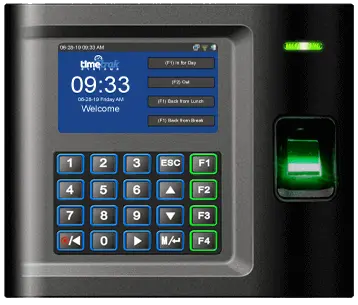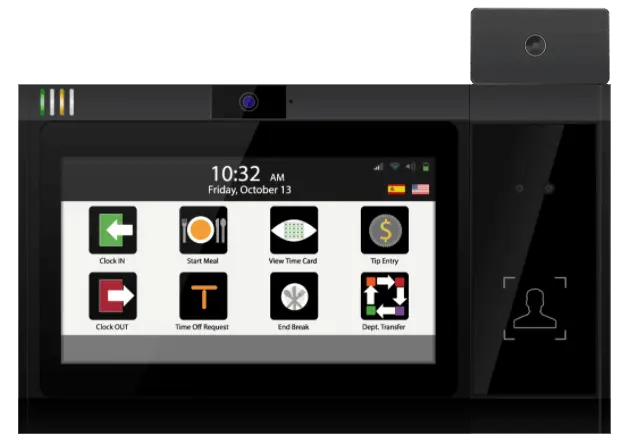Business Growth
Biometric Time Clock System
A helpful guide to choosing the best biometric time clock for your business.
Features to consider when looking for a biometric time clock system.
A biometric time clock is a device that uses an employee’s unique biometric identifier, such as their fingerprint, face, or iris, to verify their identity and record their attendance.
This helps to eliminate buddy punching, which is when one employee clocks in or out for another employee.
The best biometric time clock option for your business will depend on several factors, including your budget, the number of employees you have, the level of security you need, and even the environment.
Remember, the time clock is just one piece of the puzzle. Biometric employee time clocks require software to manage overtime calculations and reporting.
When choosing a system, seek one that aligns with your specific requirements, whether it’s handling overtime, managing time-off requests, or supporting various clocking options like mobile apps for remote employees.
Choose the best biometric clock for your workforce.
Traditionally, fingerprint time clocks have stood as the go-to biometric choice. Yet, these may not suit every environment. Industries like construction or manufacturing, where employees engage in hands-on work daily, may encounter challenges with fingerprint clocks.
The constant wear and tear on their hands can lead to unrecognizable or worn-out fingerprints, causing frustration due to false negatives—instances where the time clock rejects their attempt to clock in.
In contrast, facial recognition emerges as a potentially superior alternative in environments where hands-on work is prevalent, such as in construction or manufacturing. Unlike fingerprint time clocks, facial recognition technology isn’t dependent on the condition of hands and avoids issues related to worn-out or unrecognizable fingerprints.
Employees engaged in manual labor can benefit from a seamless and reliable clocking experience, reducing frustration associated with false negatives. Facial recognition proves to be a resilient and effective solution for accurate timekeeping in diverse work settings.
Additional things to consider when looking for the best biometric employee time clock.
Consider that the majority of biometric time clocks not only simplify your payroll processes but also contribute to saving both time and money during each week by eliminating “buddy punching”.
While the concept of an additional monthly expense might initially raise concerns, it’s crucial to acknowledge the evolving nature of mission-critical business software. Many such tools have transitioned to web-based services with a subscription-based pricing model.
Before dismissing cloud-based options for your employee time tracking software, consider the advantages of cloud-based solutions, which often include comprehensive support, regular upgrades, and, importantly, the service provider’s responsibility to manage any technical issues.
Conversely, on-premise solutions typically involve significant upfront costs for server hardware and expensive software licenses, such as Microsoft SQL Server.
When selecting a biometric employee time clock system, customer care should be a priority. Reliable timekeeping is essential for any business, and encountering issues with a malfunctioning system on payroll day can be a major disruption. Ensuring fair and accurate compensation for employees is of utmost importance, making the availability of responsive and comprehensive customer support crucial.
While some vendors may only offer email support, the ideal solution encompasses phone, chat, and email support—all included at no additional cost. This ensures that you have immediate access to assistance when needed,





